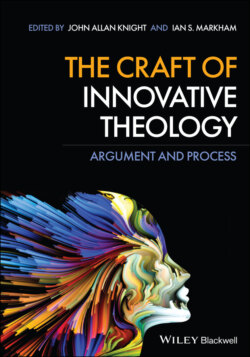Читать книгу The Craft of Innovative Theology - Группа авторов - Страница 32
Radical Fallibilism: The Principle of Humility
ОглавлениеPluralistic theology must be conducted according to the fundamental idea that on matters both large and small, we may be significantly wrong in the end. One must therefore engage in creative theology with a spirit of humility. There are both internal and external reasons for this epistemic fallibilism (see Box 1.5).
Box 1.5
One feature of this essay is to draw a contrast with other approaches to theology. So this pluralistic theology will operate with a spirit of humility. It is not a conceited theology – one that is sure that it is right and everyone else is wrong. This is an important part of Ruparell’s argument.
Firstly, within Christian scriptures and theological tradition, there are many proscriptions against the idea that human beings can adequately grasp the true nature of the divine. The Hebrew Bible and New Testament clearly state that God is beyond all reckoning,4 and that to believe and act as if one knows God’s being, nature, and acts is liable to leave one mistaken in the end, as evidenced by the parable of the sheep and goats (Matthew 25: 31–46)In this parable, those who presumably followed religious law but failed to act according to its deeper meaning were judged to be wicked. Surely one lesson to take from this parable is that one shouldn’t be quite so certain that one’s religious beliefs and practices are correct, or that one has fulfilled all of God’s requirements. And in the Hebrew Bible perhaps no greater scriptural evidence for fallibilism can be had than the epiphany of Job. While notoriously difficult to square with traditional teaching about God’s nature as well as the theodical questions which give rise to the narrative, God’s blustery appearance in the whirlwind very clearly puts human knowledge in its place: limited, mistaken, overweening. However else one might interpret the book, Job clearly emphasizes human ignorance and fallibility.
Theologically, the doctrine of transcendence, when fully realized, makes it impossible to know God, truly, in any positive sense; that is, we cannot literally attribute any predicates to God, only negations – as in the via negativa of Aquinas or Augustine’s depiction of God as wholly other (see Box 1.6).5
Box 1.6
It is worth pausing and looking closely at footnote 5. In the text, the author is explaining that God’s transcendence means that we cannot know precisely what God is like. The author is aware that this is the realm of apophatic theology. To discuss this at any length in the text would be a major distraction. Instead, the author uses the note to invite the reader to read an essay on apophatic theology. In this way, he reassures the reader that he is aware of this strand in the literature; and he helpfully directs the reader to a text that can provide a helpful discussion of this approach to theology, namely, Andrew Louth, “Holiness and the Vision of God in the Eastern Fathers,” in Holiness: Past and Present, ed. Stephen C. Barton(London: T&T Clark, 2003), 217–239.
The transcendence of God puts hard limits on what human beings can know about the divine, highlighting the humility with which we must hold theological statements. Of course the doctrine of transcendence, and indeed the scriptures on which they are based, are also balanced by statements that positively ascribe actions and characteristics to God. Aquinas’s theory of analogy makes certain forms of positive religious language possible and sensible, but of course analogical language cannot be said to refer to God directly. We must rely on figurative language to speak, as it were, above our heads,6 while maintaining strict adherence to Divine Otherness lest our words refer to something other than God.7 To be clear, transcendence logically forbids the possibility of literal, positive predication, so the characteristics of God described in scripture and tradition must be suspended in analogical tension. In the light of this tense suspension, the most consistent perspective is that when humans hold a particular view about the divine it must be held lightly, as with an open palm. This is a performance of our humility: we cannot presume to truly know God, yet we are able to understand our relationship to the divine only when we continually recognize the tentative, fallibilistic nature of our ideas.
Most religious traditions accept that language cannot literally refer to God, only analogically or figuratively. Just as the idea of transcendence necessitates a theology which requires epistemic fallibilism as an axiom, analogical predication opens up possibilities of understanding that facilitate and even encourage a religiously plural, creative theology. The flexibility and polysemy inherent in analogical/metaphorical8 language allows for a wide variety of images, metaphors, and symbols to be used in religious language, not all of which necessarily derive from a single tradition. This opens up the possibility of using figures of speech (along with their semantic horizons) deriving from “foreign” language games, resulting in hybrid or creole predication. This is indeed the case for Christian tradition itself, as the first few centuries of its theological development show a synthesis of Jewish and Greco-Roman concepts, language, images, narratives, and symbols: the marriage of Jerusalem and Athens. So if, following George Lindbeck,9 we understand the relationship of theology to religious belief, practice, and tradition on the model of the relationship of grammar to its natural language, then a thoroughly pluralistic theology can be forged through explicit and implicit synthesis of ideas, images, and concepts derived from a variety of religious forms of life. What begins with a humble recognition of fallible and limited human abilities to know the divine leads to a freedom to borrow from a variety of languages and conceptual schemes in order to express what can usefully be said. A humble, creative, pluralistic theology must therefore leave space for such hybridity.
